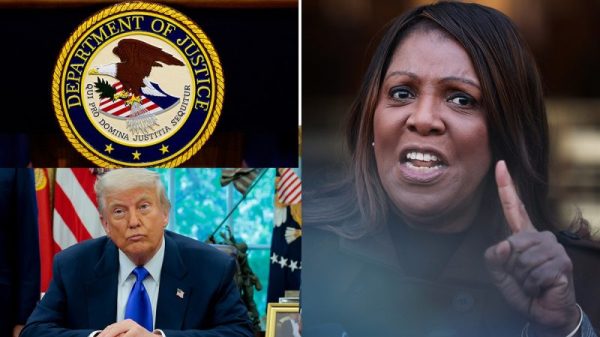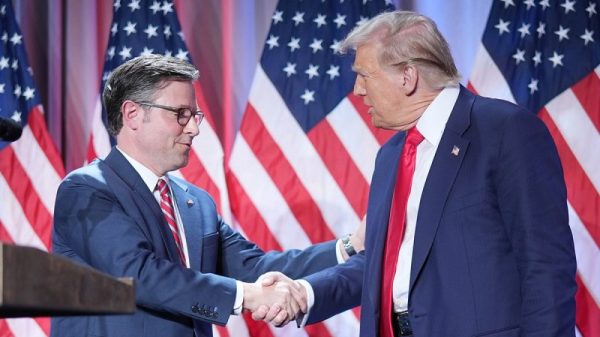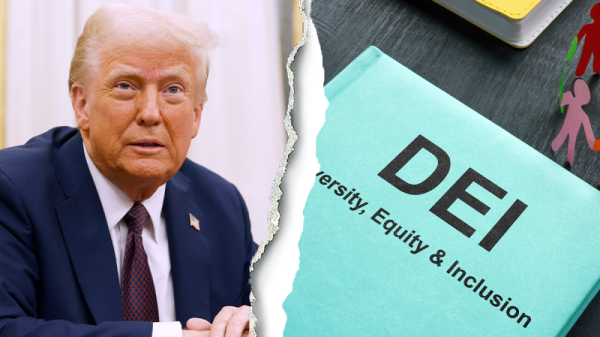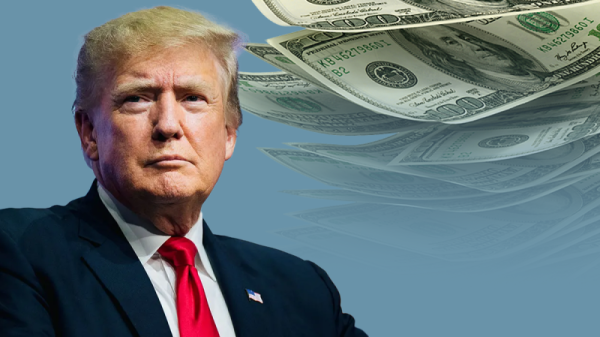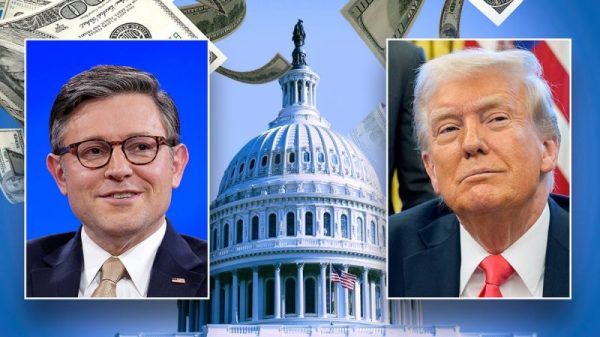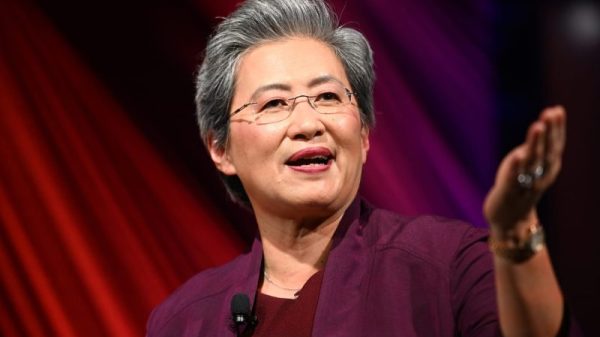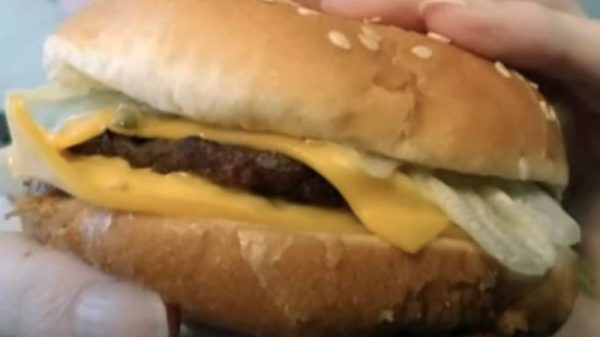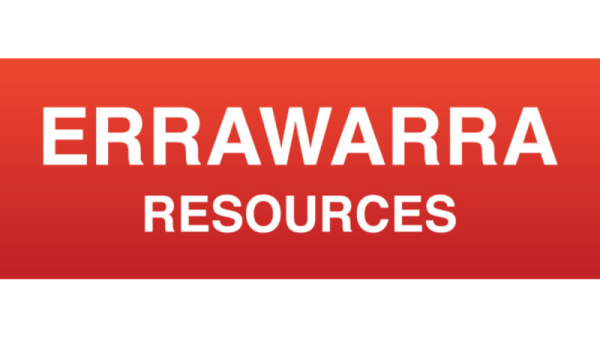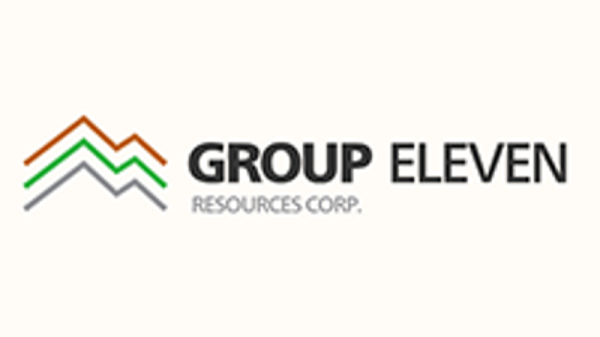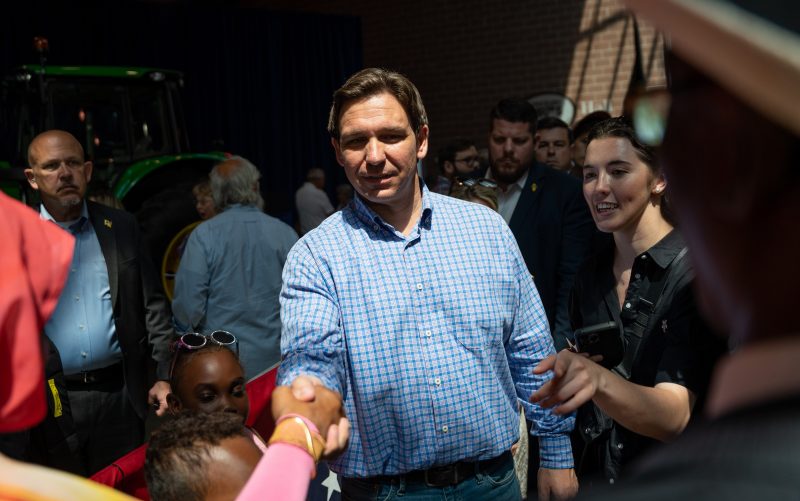The latest campaign finance reports for the 2024 presidential contenders were due to the Federal Election Commission on Saturday, offering the first real snapshot of what the White House candidates are raising and spending. Here are a few takeaways from a Washington Post analysis of the filings.
Florida Gov. Ron DeSantis spent nearly $8 million during the first six weeks of his campaign and he is relying heavily on big-money backers to fund his effort, according to the new disclosures detailing the $20 million haul that he reported for the second quarter of the year, covering the period between April and June. Some of his high-dollar backers have already given the maximum amount allowed. That dynamic could spell trouble ahead for the Florida governor, who is struggling to match the deep reservoir of small-donor support that Donald Trump built up over the four years of his presidency.
Although the full picture is not yet available of how contributions were divided among Trump’s political committees — since those reports are not due until the end of the month — an aide to Trump said the average donation to his 2024 campaign has been $34, which was cited as evidence of his grass-roots support.
About 14.5 percent of the money DeSantis raised in the second quarter — $2.8 million — came from un-itemized contributions of $200 or less, according to his report. DeSantis’s wellspring of support from big-money backers was a hallmark of his Florida campaigns, and it has been a key selling point for his candidacy as he tries to present himself as the strongest alternative to Trump. In addition to the $20 million that DeSantis raised in the six weeks after his official announcement — an impressive opening sum — the super PAC backing him said it has amassed $130 million to aid his effort. He had more than $12 million in cash-on-hand at the end of the quarter.
Other rivals appear to be having more success connecting with small-dollar donors, even if the sums they are raising are far less than those garnered by DeSantis. More than 20 percent of the donations received by Sen. Tim Scott (R-S.C.) and nearly 30 percent of those received by former vice president Mike Pence were from contributors giving $200 or less. And more than a third of the donations to former New Jersey governor Chris Christie, a key Trump critic, were from those small-dollar donors, whose contributions were not itemized on the reports.
Small-dollar donors are seen as one indicator of how wide a candidate’s support is among rank-and-file voters, as well as a signal of how much longer supporters can continue to give, compared with those who write large checks and quickly hit the legal limit.
About $13.8 million of the $20 million that the Florida governor raised was from supporters who donated the maximum of $3,300 that they are allowed to give in the primary phase of the campaign, meaning DeSantis will not be able to go back to them again in his quest to beat Trump and advance to the general election. Some of those donors have also given the maximum permitted for the general-election phase of the campaign.
The two front-runners for their respective party nominations are reliant on multiple vehicles to raise money.
Trump’s aides have said he raised $35 million through his joint fundraising committee, which divides donations between his campaign and his leadership political action committee, but the report detailing the contributions to his joint fundraising committee was not yet available on Saturday night.
His campaign report was, and it showed that the campaign brought in $17.7 million, which included about $15.2 million from the joint fundraising committee. Disclosures detailing the spending of his leadership PAC and the super PAC supporting him do not have to be filed until the end of this month.
President Biden raised more than $72 million in the second quarter for his reelection bid, and his campaign said the vast majority of the donations were less than $200. He was able to raise that larger sum because individuals can give up to $929,600 to the Biden Victory Fund, which includes the campaign, the Democratic National Committee and state parties — whereas the individual contributions to political campaigns are limited to $6,600.
The campaigns of Trump, DeSantis, Scott, Christie, Nikki Haley and Vivek Ramaswamy have all said that they have more than 40,000 unique donors to their campaigns. That is the Republican National Committee threshold that each candidate must meet to qualify for the first debate in Milwaukee. But the reports filed to the Federal Election Commission on Saturday do not offer a full picture yet of how many unique donors there are to each campaign, because the FEC only requires campaigns to itemize contributions of more than $200.
Still, the new disclosures suggest that contenders such as Pence and former Arkansas governor Asa Hutchinson are struggling to hit a fundraising pace that would get them to that 40,000-donor threshold. (The RNC will also require debate participants to have at least 200 donors per state or territory in more than 20 states or territories, among other criteria to make the stage.)
Pence raised less than $1.2 million during the three-week period between his announcement and the end of June. His advisers say his fundraising strength may become more evident later this year because he is targeting many of his small-dollar donors through direct mail — a more time-consuming and labor-intensive process.
The full picture of how many unique donors each campaign has could become clearer at the end of the month, which is when the FEC report is due for WinRed, a major fundraising platform for GOP committees and campaigns that makes it easier for Republican donors to give in small amounts.
The reports offer a snapshot of the pace of spending and what resources the candidates will have in their accounts as they look to make their mark heading into the first debate and beyond. Trump reported $22.5 million in cash on hand at the end of the second quarter, compared with DeSantis’s $12.2 million. Scott, who was able to transfer millions from his Senate committee to his presidential committee, has about $21.1 million in cash on hand. Pence has $1 million.
Haley is running a leaner operation than some of her rivals, conserving her resources and ending the quarter with $6.8 million in cash on hand.
Payroll was one of the biggest-ticket items for DeSantis — with about 90 aides listed on his second-quarter report. Trump’s report showed about 40, and Scott reported about 50.
The more than $15.6 million spending on ad buys by the group allied with DeSantis, Never Back Down, and the nearly $12 million spent by Scott’s campaign and the super PAC supporting him, Trust in the Mission PAC, has not yet made a dent in dislodging Trump’s dominance in the race. MAGA Inc., the super PAC backing Trump, has spent about $19.9 million on ads since the beginning of this year, according to an analysis by AdImpact.
Another contender who has poured money into advertising is North Dakota Gov. Doug Burgum, who has spent $5.78 million on ads to boost his name recognition. Burgum reported that he had raised more than $11.7 million for his campaign, but nearly $10.2 million came from loans either received from or guaranteed by the candidate. The North Dakota governor ended the quarter with about $3.6 million in cash on hand.

